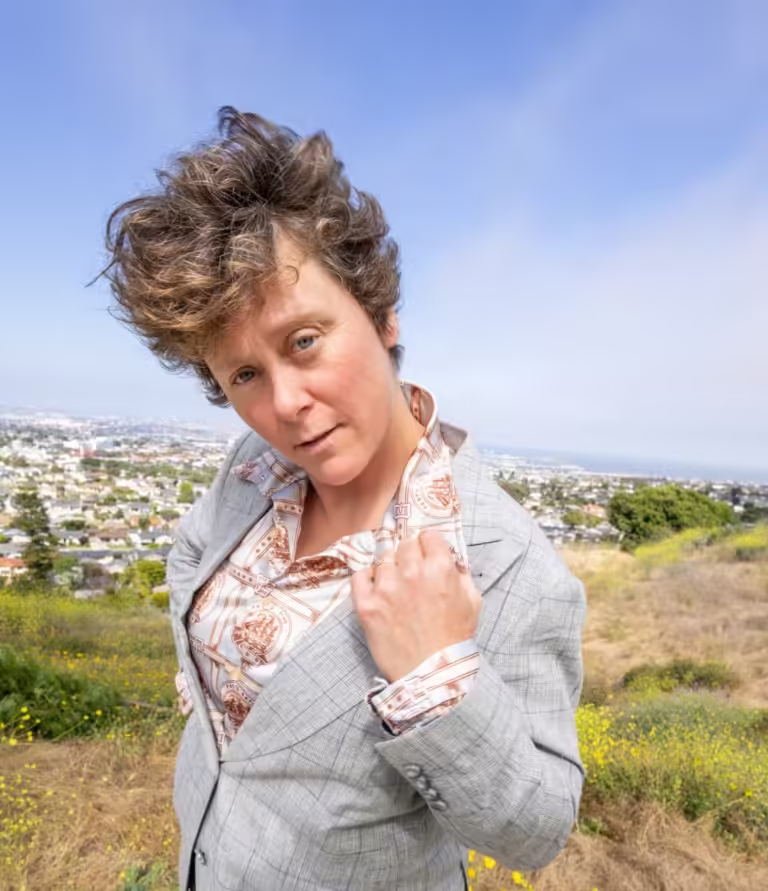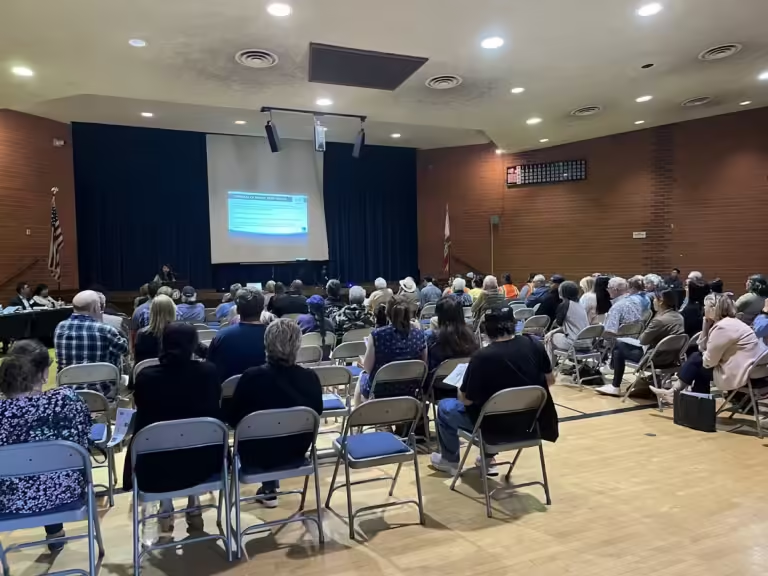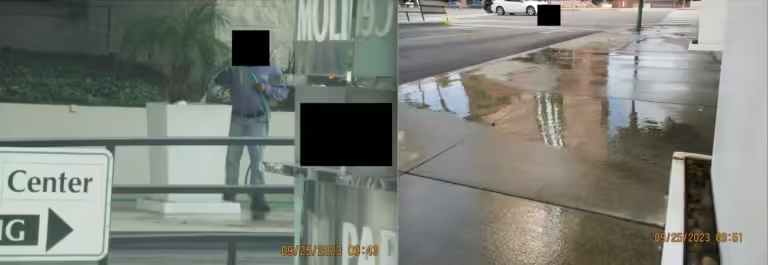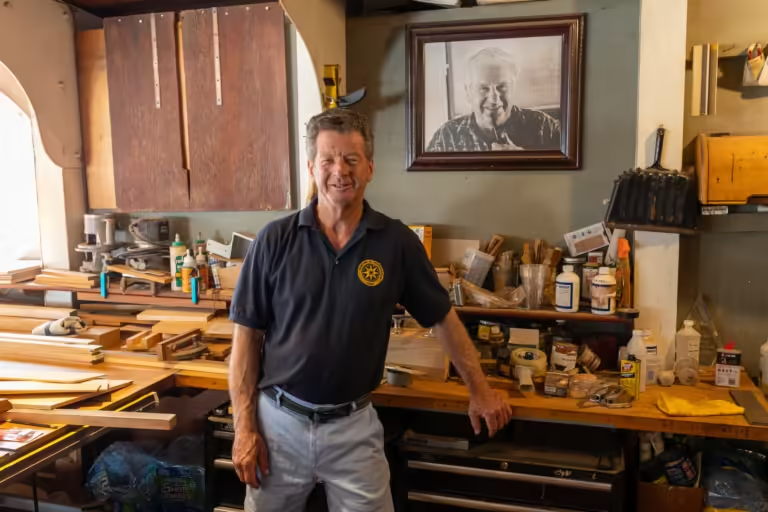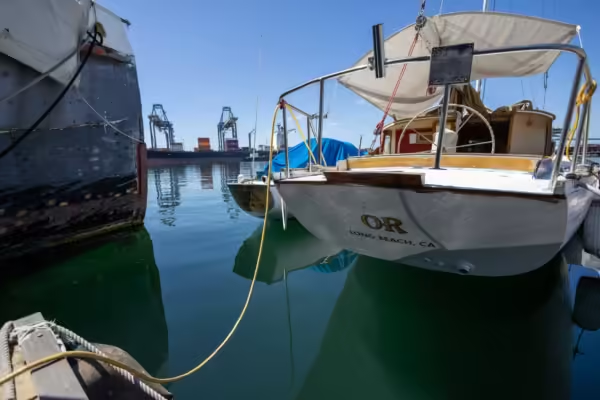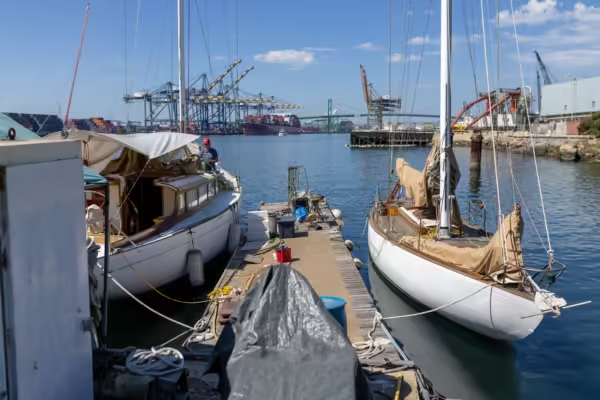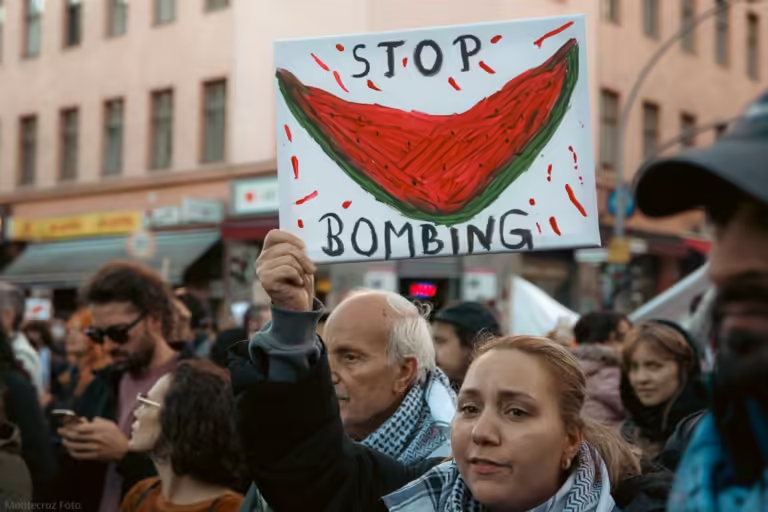Larin Sullivan Brings Film and Community Together in San Pedro
San Pedro-based filmmaker Larin Sullivan is building a bridge to connect all the communities she is a part of.
Motivated by connection and friendships while serving as a conduit for new ideas to spark new conversations, Larin started Coastal Commons in San Pedro this past April. Its first meetup happened in May, at Angels Gate Cultural Center to bring people together who work alone from home. She also hosted San Pedro’s first Fleet Week Drag Brunch at The Sardine. Further, Larin offers a screenwriting workshop at Angels Gate, which runs until July 12.
One of the things that drew Larin to San Pedro is its pride in its history reflected in its art, and the desire of many community members to utilize this town’s natural resources.
“We have a great city … [and] coast … I want to tell people about it and bring people, from my other communities in LA, here for a meaningful connection to this coastal common space.”
Larin earned her MFA in directing from the Columbia University School of the Arts, film division. Her three short films, Dive, Exposure and Bike Job, have been screened at more than 30 film festivals globally, including BFI Flare, Frameline, InsideOut, Nashville Film Festival, Mill Valley Film Festival and Outfest. Larin is the founder of Trinket Films and her short film of the same name is now on the festival circuit. After attending film school and a stint in Sydney, Australia directing commercials and documentaries, she returned to Los Angeles in 2017.
She is set to direct The Young King, a feature narrative she wrote that focuses on the world of drag kings. A drag king is a person and especially a woman who dresses as a man and performs as an entertainer in male drag. The project received support from Tribeca Film Institute, Sundance Institute, and others. Her short film of the same name was screened in last year’s San Pedro International Film Festival or SPIFFest. She is also filming a drag king documentary, The Other Drag, which explores gender inequity in the drag industry.
Her filmmaking experience includes producing and directing documentary and narrative projects for HBO/MAX, Showtime, Magnolia, HGTV and ABC Australia.
San Pedro landed on her radar in 2011 when she worked on a Starbucks commercial that was filmed at a warehouse at the port where they age coffee beans. Inspired, Larin called her mother to tell her she was in San Pedro for a job and had never been there. She was in the harbor, then drove all around Vinegar Hill and loved it.
Later that year, she moved to Australia where she worked as a director in advertising. A few years later, her mother called her, recalling how much Larin liked San Pedro, to tell her she put an offer on a duplex in town. She asked her daughter to return to the States to help her fix it up. With Larin at the end of a relationship there, it was good timing. Mother and daughter fixed up the duplex together and Larin and her family live in one of its apartments. Upon moving here, Larin was still very connected to LA’s social and work scenes, where she met her partner. Then the pandemic came. They spent “a lot of time, like all of our time here,” Larin said.
Larin expressed her desire to connect her film world with San Pedro, noting that while San Pedro often appears on film, the question remains: who is telling their stories?
“We’re not fostering a generation of storytellers from this community … how do we make sure that the kid who grew up in Pedro who has an amazing story to tell is supported to find a way to do that instead of just letting Hollywood use us as a backdrop?” the filmmaker said.
Larin began community building in high school, using the video camera as her tool with her group of friends. She became their group photographer. Later at Mills College in the Bay Area, she immersed herself in a queer arts community and drag community. She moved to LA to take a job working in the programming department at film festivals. This provided yet another community experience because “film festivals are like a pop-up community,” she said. While in LA, Larin started the Shotgun Club, which was a weekly party. That room doesn’t exist anymore but the bar remains and has spun off into other parties and events. That community still exists and has gone on to organize Dyke Day LA, which just happened on June 8.
A “rewarding, nourishing experience,” working with that group connected Larin to many folks whose art and activism she admired.
Raised by a working single mom, Larin was often alone as a youth and lonely. Then she realized she could connect with people and bring them together. She thinks it became a hunger from growing up that way.
Larin’s hunger for social interaction just kept growing. Now, she’s a member of Film Fatales and Women’s Center for Creative Work and the former Free the Work. Each is a notably supportive professional organization in terms of networking, sharing resources and through feedback and discussions on projects. However, Larin noted, these institutions aren’t always bulletproof.
“It’s unfortunate that a lot of organizations are not able to thrive right now in the ecosystem,” Larin said. “There’s just … a decline in DEI initiatives and they were really out in front of advocating for women and people of color in advertising. Then they evolved and tried to grow and had a vision for bigger growth that didn’t work … so, it’s a time when a lot of organizations … we take for granted are closing or struggling because of the way that the entertainment ecosystem is changed.”
These organizations are good places to meet other people. While their programs can be substantive, it’s also about who you meet and who you are on the same level with and rising together, Larin said. This is a big part of why Larin recently started Coastal Commons in San Pedro. She intends to recreate that framework of support. Larin wrote on her Substack account, “I still long for the creative networks and the vibrant scene I left behind in Northeast LA.”
Coastal Commons is about going back to something Larin knows she can do, building community. She noted it’s going to evolve, and be affected by input from the people who want to be involved, and see the community grow in a certain way and are willing to put their time into that, because she can’t do this alone.
Gentrification
On her Substack account, Larin recounted returning from Australia and finding a “vastly gentrified” East LA. She believes San Pedro gentrification is happening more slowly.
“Of course, it’s happening but [with] the intergenerational wealth of the port community and how people pass things down to their kids, people are able to hold on to homes and then hold on to the culture more, which is a really nice thing about this place. [It’s] what draws me to it because you’re in a place where there is a culture and a society around you and that has a supporting element.”
Larin said there are high-income rents and for businesses to survive they need customers — the issue is that people need things to do. She’s trying to determine what kind of things people want to do, will show up for, and how to connect through meaningful social interaction.
“The co-working events are intended to be [a place] where you can meet someone that you might want to collaborate with,” she said. “There’s not really a place to meet other people who are … in their home office working alone.”
Filmmaking
Larin makes films to tell stories that make communities visible. She posited the drag king community is not known and celebrated the way it should be. This drives her to make films about drag kings. Other themes resonate in her life. As a female, queer, filmmaker, she said, it’s very hard to get your work in the mainstream. It’s a similar issue with drag kings. Larin connects to their challenges and struggles.
“I also used to do drag … I was in drag at the Drag Brunch. Drag is so liberating and fun and gender is to be played with.”
She said her career challenge is finding a way to get to know her strengths better and finding a way to make a living in this business.
Larin’s film about drag kings, titled The Young King, is currently in script form and requires funding for production. For a feature film, she needs to raise the budget. In the interim, while discussing drag kings and pitching the concept, they found that many people were unaware of drag kings or had never seen one. This realization prompted her to step back and make a documentary about drag kings, investigating their history and examining the inequity within the drag community. While drag queens are widely recognized, drag kings are not as well known.
Working on that is a balance between her film project and things she can do immediately to meet people and connect in this community.

Drag Brunch
The idea for the Drag Brunch came to her when she discovered Fleet Week in San Pedro.
“I know that this is something the community has a lot of pride in, but we still don’t have a queer LGBT bar or restaurant specifically catering to that community,” Larin said. “I knew that a lot of our service members are LGBT and I wanted to create something that would both welcome them and also make a point of connection for our community to do something different than look at ships because not everyone wants to look at ships, but also still hang out with sailors, which is just fun.”
The drag brunch was a fundraiser for Veterans For Equality and it was a way to program drag artists that Larin loves. Folks had a great time and Larin will do it again.
“I’m interested in queer history of San Pedro. There was probably a time in the military when it was pretty accepted and expected that there was gay activity. I’m not a historian and that’s not my area of expertise but it’s more of an imagined space that gives inspiration. As a screenwriter. I’m always imagining what it must have been like. I can read a line in an article that’s very dry and then a whole atmosphere will come to life in my head about what that would have been like … the creative impulse.
“I just want to hear people’s stories.”



